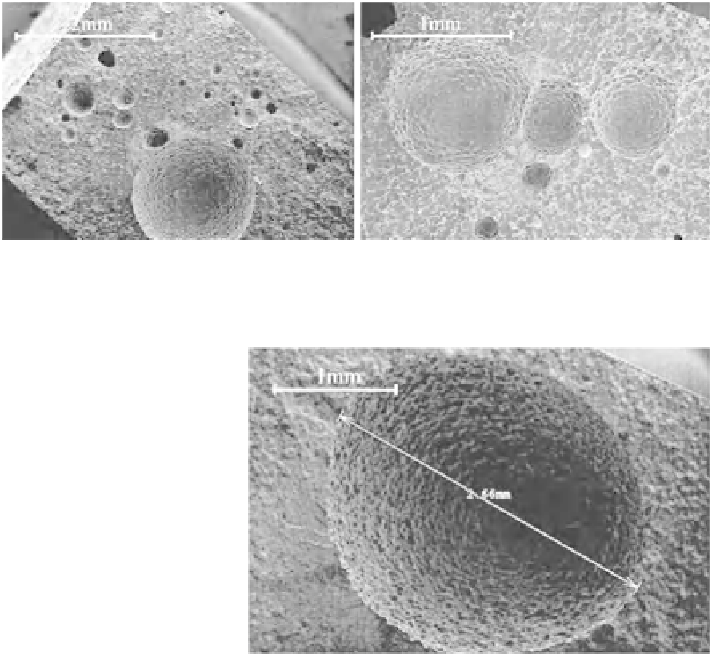Biomedical Engineering Reference
In-Depth Information
Fig. 8.4
Scanning electron micrograph of a hand-mixed fracture surface for a commercial bone
cement showing a large pore with a large number of small pores [
62
]
Fig. 8.5
Scanning electron
micrograph of a vacuum-
mixed fracture surface of a
commercial bone cement,
with a larger pore size
compared to hand-mixed
cement [
62
]
of air during mixing [
21
]. It is often observed that multiple smaller pores (£ 1 mm)
in close proximity are more detrimental than one larger pore (³2 mm); this is often
a result of the type of mixing method employed [
62
]. A multiple pore arrangement
is typically observed for hand-mixed specimens (Fig.
8.4
) where the combined
interaction of the pores produces a stress concentration large enough to cause fatigue
crack initiation. In contrast, vacuum mixing (Fig.
8.5
) usually generates a smaller
distribution of pores.
There is evidence to suggest that hand-mixed cement reduces the level of shrink-
age that cement experiences due to the high level of porosity introduced during mix-
ing [
21
], as only the cement shrinks during polymerisation and not the voids [
47
] .
However, porosity may be beneficial to reduce residual stresses prior to loading;
this benefit could be outweighed by the adverse effects observed for fatigue crack
initiation and propagation. When the propagating crack tip reaches a pore, failure is
considered to occur instantly across the void area, effectively causing the crack
propagation rate to increase. Conversely though, there are studies that suggest that
pores act as crack “blunters”, thereby increasing the fatigue life of the bone cement
[
94
], although crack acceleration into the void must also occur due to the local stress
concentration at such a defect.

Search WWH ::

Custom Search